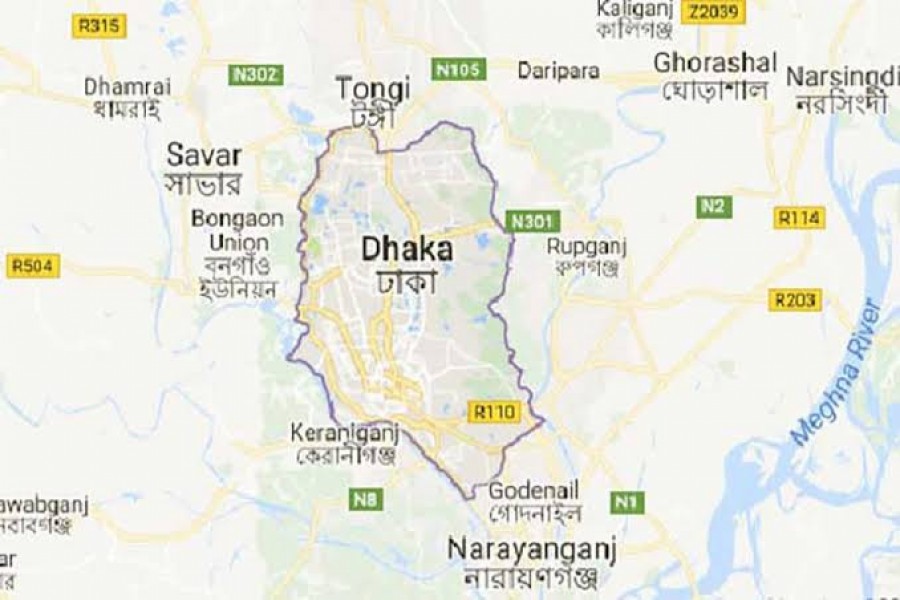The scenario at Kolkata's Sealdah rail station in the mornings and afternoons on working days has been offering the similar picture for over 70 years: thousands of passengers, both male and female, with strapped cotton-made or leather bags hung across their shoulders passing through entry and exit gates. Sealdah is one of the largest and busiest rail stations in whole India, not to speak of the West Bengal state. Newer mid-distance and short-distance commuter trains continue to being pressed into service connecting far-flung satellite towns and the relatively distant suburbs around the city. Office-goers and traders, as well as university students, visiting Kolkata daily through Sealdah and their unabated increase in number is now integral to the commuting scenario of the fast expanding metropolis. The message that gets across from the spectacle invariably points to an essential reality. It is focused on the continued setting up of dozens of smaller towns in the broader vicinity of Kolkata.
With a population of estimated 20.628 million in 300 square kilometres, Dhaka is becoming stiflingly unliveable. According to international surveys, thousands of people enter the capital every day. A sizeable number of them stay back in the city, adding to its massive population pressure. These new arrivals chip away at almost every sector of Dhaka's urban amenities. Viewing broadly, they include living space, movement on roads, healthcare services and travelling by buses in tolerable comfort. Urban experts also single out the menaces of law and order slide, footpath encroachment by hawkers, scarcity of fresh water etc for the migrations en masse to the capital. Most important of all these blights, the population of greater Dhaka is fast reaching an irreversibly vulnerable point. The areas being populated overnight include the city's residential pockets and the business districts. Thanks to the unmanageable rush of passengers, the in-city commuting service has long been on the verge of near-breakdown. The upcoming metro rail network is expected to alleviate the city's passenger movement to a great extent. But the complete launch of the service in near future is hinged on many factors related to acquiring efficient operational capability of the network.
In the earlier times, many other South Asian cities used to face similar day-to-day urban ordeals. Most of them have solved their problems by putting in place alternative arrangements for aspiring big city-bound migrants. People were made to be weaned off from big cities by smaller urban hubs built around them. Except the centrally operated administrative matters, the tiny or somewhat larger urban pockets extend almost all services required for a decent living. It is normally seen in the developed countries. Fast developing countries like India, Thailand, Brazil and many others also do not lag much behind.
Population experts in Bangladesh have lately been repeatedly harping on this pragmatic way out of the increasing pressure on its largest city: building fully-functioning satellite towns around Dhaka.
These small urban centres ought to be designed as fully-fledged urbanised settlements. The experts having vision cite the instances of a number of previously built tiny urban centres near the capital. A few of them have grown into sprawling, vibrant towns. They include Kaliganj, Savar, Dhamrai, Monohordi etc.
Gazipur, once a sleepy riverside town, is now considered as one of the fast-emerging bustling cities not far from the capital. A flipside of this previous satellite town, located beside the Dhaka-Mymensingh Highway, is its present alarming scale of air pollution. According to various indexes, Gazipur's pollution level is found to be much higher than that of Dhaka. At a casual glance, the district town's frenzied growth cannot be separated from the capital. The once small town has over the last couple of decades witnessed mushrooming of myriad types of industries. Readymade garment (RMG) and textile factories top the list. Concomitantly, the number of Gazipur's permanent residents is fast spiralling out of control. To speak pithily, Gazipur has lost its place on the list of satellite towns long ago. The fast growth of this town and the Tongi industrial belt has veritably been phenomenal. This type of unbridled growth is viewed as something unwarranted.
In fact, urban planners look forward to setting up of many sparsely populated and pollution-free smaller towns around the capital Dhaka. But they also emphasise a precondition. The newly built towns ought to be self-sustaining complete with all essential urban services. This prerequisite has long been associated with the one of administrative decentralisation. The smaller urban centres ought to be empowered with capacity to enjoy the fruits of devolution. Experts believe this particular step might deter many locals from deserting their towns for the capital or large metropolises. Sufficient scopes for both skilled and unskilled jobs emerge as another incentive for the residents of these towns.
It's encouraging to note that the slowly growing small cities around Dhaka have not failed to draw their permanent residents. Given the fast galloping population of the country itself, there should not be any dearth of people willing to move to the newly set up towns. In the task, the authorities need not worry about the right and conveniently located sites. These towns can be built in areas having skeletal structures required for establishing a new urban centre. The foremost imperative relates to the construction of road networks, forming municipal authorities and public utility centres like hospitals, schools etc.
In this regard, the sites like Sonargaon, Gazaria, Ghorashal or Pubail could be brought into the focus of the relevant authorities. These places are not too far from Dhaka. Many people have already started residing in these places. They have become used to commuting to Dhaka by buses, motor launches or railway to attend office and conduct businesses. There are many such places around Dhaka --- ideal for transforming them into small towns. Few large metropolises in the world could have coped with their ever-burgeoning populations without suburban towns. There are ready examples like Jamaica, Queens or Greenville in New York, or West Ham, Greenwich etc in greater London.


